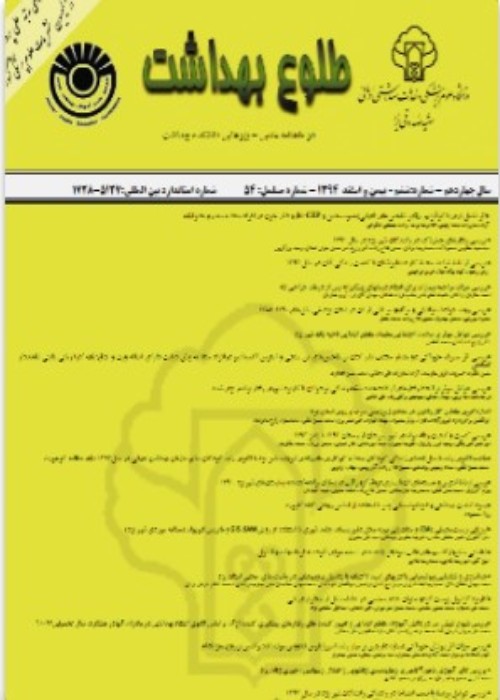Beliefs of Health Sector Personnel in Taft District about Hepatitis B: An Application of Health Belief Model
Author(s):
Abstract:
Introduction
The prevalence of hepatitis B as the second most common cause of acute hepatitis is about two and a half million people in Iran. Personnel of medical groups and individuals who work with blood and body fluids of patients have more than normal population risk of being infected. Therefore, prevention is important in this group. One of the models of behavior change in health education is health belief model that focuses on changing beliefs, these changes will ultimately lead to changes in behavior. The aim of this study was to determining Beliefs of Health Sector Personnel in Taft District about Hepatitis B based on health belief model. Methods
This study was a cross sectional study among 351 Health Sector Personnel Taft city in census method. Questionnaire made thirty-three valid and reliable questions (α=0.83) based on the structure of health belief model was in two parts. Including demographic with six questions and questions related to health belief model structures, including knowledge seven question, four items perceived susceptibility, five items perceived severity, three items perceived benefits, four items perceived barriers and four questions about cues to action. then complete the questionnaire in self report data were analyzed by SPSS-18 by use of descriptive and analytical such as Pearson correlation, ANOVA, T- test in α=0.05. Results
Mean age of participants 35.03±8.13. Mean score in each of the structures were, knowledge 11.73±2.67 (range score 0-14), perceived susceptibility 15.41±3.1 (range score 4-20), perceived severity 15.17±2.84 (range score 5-25), perceived benefits of 12.59±3.49 (range score 3-15), perceived barriers 10.68±2.6 (range score 4-20) and cues to action 2.66±1.35 (score range 0-4). There were correlation between the susceptibility and knowledge (r=0.498**, P<0.001). There were a Significant relationship between level of education and knowledge mean score (P<0.001), perceived susceptibility (P<0.001), perceived benefits (P=0.02), cues to action (P=0.036). Also there were significant relationships among the work place participants and knowledge (P=0.028), perceived intensity (P=0.001), perceived benefits (P<0.001) and cues to action (P<0.001). Conclusion
Opinions of the participants were at acceptable levels but attention to the several precarious conditions of these people and the importance and necessity of continuing education about prevention to transmission of disease therefore is recommended continuing education about learning related subjects and how to deal with patients and their care.Keywords:
Language:
Persian
Published:
Tolooe Behdasht, Volume:13 Issue: 1, 2014
Pages:
145 to 156
magiran.com/p1271154
دانلود و مطالعه متن این مقاله با یکی از روشهای زیر امکان پذیر است:
اشتراک شخصی
با عضویت و پرداخت آنلاین حق اشتراک یکساله به مبلغ 1,390,000ريال میتوانید 70 عنوان مطلب دانلود کنید!
اشتراک سازمانی
به کتابخانه دانشگاه یا محل کار خود پیشنهاد کنید تا اشتراک سازمانی این پایگاه را برای دسترسی نامحدود همه کاربران به متن مطالب تهیه نمایند!
توجه!
- حق عضویت دریافتی صرف حمایت از نشریات عضو و نگهداری، تکمیل و توسعه مگیران میشود.
- پرداخت حق اشتراک و دانلود مقالات اجازه بازنشر آن در سایر رسانههای چاپی و دیجیتال را به کاربر نمیدهد.
In order to view content subscription is required
Personal subscription
Subscribe magiran.com for 70 € euros via PayPal and download 70 articles during a year.
Organization subscription
Please contact us to subscribe your university or library for unlimited access!




